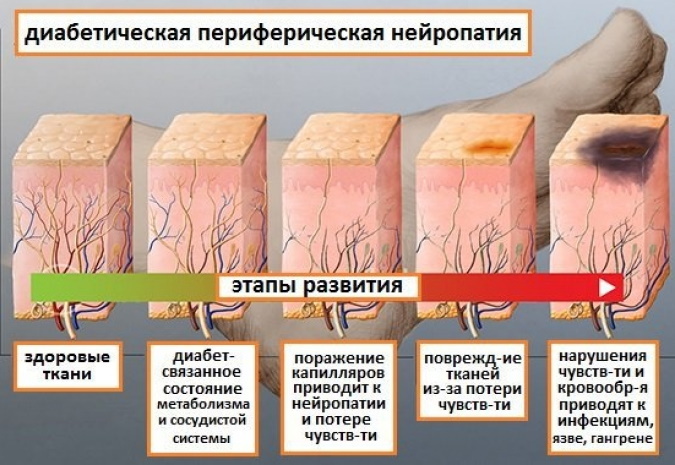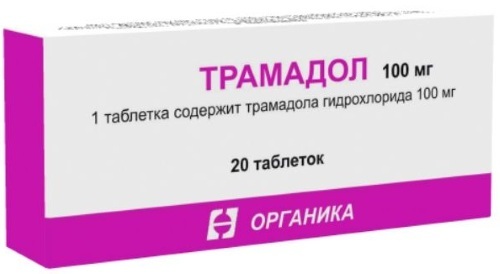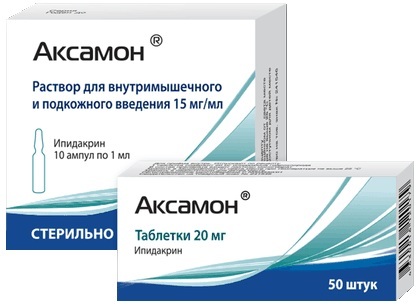Content
- Views
- Stages and degrees
- Symptoms and Signs
- Causes
- Heel spur
- Plantar fasciitis
- Baxter's neuropathy
- Morton's neuroma
- Diabetic neuropathy
- Peripheral neuropathy
- Tarsal Tunnel Syndrome
- Sciatica
- Diagnostics
- Treatment methods
- Drug treatment
- Folk remedies
- Physiotherapy methods
- Surgery
- Possible consequences and complications
- Video about inflammation of the nerve in the leg
Inflammation of a nerve in the leg is called foot neuralgia or neuropathy of the lower extremities. It can be triggered by temporary injury or illness. It is characterized by the appearance of some common symptoms similar to other pathologies, and treatment depends on the established diagnosis.
Views
With neuropathy of the lower extremities, the nutrition of the nerves is disturbed, the development of degenerative processes of varying severity begins. The inflammation can be mild or severe.
Classification by type and shape:
- toxic, arising against the background of intoxication of the body;
- inflammatory, affecting nerve fibers;
- axonal, which is accompanied by the destruction of the axial cylinder of the nerve;
- allergic, caused by excessive sensitivity to drugs and external factors;
- demyelinating (the cause is encephalomyelitis, multiple sclerosis);
- traumatic (damage to the legs, feet).
There are three types of nerve fibers - autonomic, sensory, and motor.
As a result, several forms of neuropathy are considered, depending on which nerves are involved in the pathological process:
- Vegetative. It is accompanied by impaired urination, excessive sweating.
- Sensory. She is characterized by pain, excessive skin sensitivity, she can even react to the touch of shoes.
- Motor. This involves a specific group of muscles involved in the movement. Motor neuropathy is accompanied by spasms and seizures. In severe cases, a person cannot move independently.
In terms of duration, inflammation is acute or chronic, along the affected area - distal, when individual areas are affected, or proximal (spreads up the legs).
Stages and degrees
Inflammation of a nerve in the leg (symptoms and treatment depend on the pathological process) can manifest itself in different ways, depending on the stage of the pathological process. With the development of the spur, the pain increases gradually. Bone growths begin to press on soft tissues and nerves. With any pressure, the pain intensifies, it is difficult for the patient to walk.
When inflammation develops against the background of peripheral or diabetic neuropathy, the pathological process also develops gradually. Pinched nerves are accompanied by sudden, sharp pain. Then it becomes impossible to step on your feet. Pain appears with any movement. The leg aches even at rest.
Symptoms and Signs
Inflammation of a nerve in the leg has common symptoms and treatments. The main symptoms include tingling, burning, and pain in the affected area. Sometimes a person feels something like an electric shock. Soreness in the legs can occur at any time of the day, but more often it worsens at night, especially after heavy physical exertion or walking. Inflammation of the nerve is accompanied by muscle weakness, limitation of motor activity. Sometimes there is numbness in the limbs.
Causes
Inflammation of a nerve in the leg (symptoms and treatment depend on the type of disease) can provoke:
- phlebeurysm;
- flat feet;
- high-heeled shoes;
- obesity;
- plantar fasciitis;
- inflammation of the joints;
- heel spur;
- wearing tight or tight shoes;
- thickening of the foot;
- lipomas (subcutaneous fat bumps);
- leg injuries (especially in the foot area);
- ganglion cyst;
- tumors;
- postoperative scars.
Also, inflammation of the nerve in the foot is often triggered by certain diseases.
Heel spur
Heel spurs are growths that form on the bone of the heel.

The most common cause is strong pressure on the legs. But malnutrition, active sports, jumping can provoke the appearance of spurs. Other reasons are the uneven distribution of body weight, which usually accompanies flat feet and severe obesity.
Plantar fasciitis
Plantar fasciitis is caused by strong pressure on the foot. But the provoking factors can be age-related changes that occur after 40 years, heavy physical exertion, injuring the legs, high rise of the foot. A common cause is wearing tight shoes, standing for a long time without rest, arthritis. Plantar fasciitis is more susceptible to women. Inflammation of the fibers begins due to pressure.
Baxter's neuropathy
This is a form of nerve entrapment caused by compression of the lateral calcaneus, located under the base of the foot. Baxter's neuropathy can be caused by obesity, heel spurs, plantar fasciitis, or flat feet.
Morton's neuroma
Morton's neuroma is a thickening of tissue that compresses nerve fibers between the toes. In this case, pain appears at the bottom of the foot. It is aggravated by walking and wearing high heels. When the legs are resting, it decreases and gradually disappears. Nerve inflammation can be accompanied by tingling, burning pain, cramps, or numbness in the affected area.
Diabetic neuropathy
During diabetes, foot neuralgia is often diagnosed (in about 90 percent of cases). With the development of inflammation, pain first appears that covers the toes and surrounding areas. Then it spreads along the foot and up the limb.

Additional signs of diabetic neuropathy include:
- pain that appears when touching the skin;
- burning, tingling in the limbs;
- sensation - like an electric shock;
- shooting or sharp pain in the limbs;
- increased symptoms at night, because of this, the patient wakes up.
Also, doctors suggest that the cause of inflammation of the nerves in the foot is a decrease in immunity, vascular disorders, changes in calcium or sodium channels. Risk factors include old age, frequent alcohol consumption, and smoking, when diabetes has not been treated for a long time.
Peripheral neuropathy
The concept of peripheral neuropathy includes a number of symptoms - tingling and burning in the legs, fingers, their numbness. Symptoms are worse at night. As a result of the development of inflammation, motor functions are hampered, restrictions appear in some types of activity.
The risk group for peripheral neuropathy includes diabetes mellitus, infections, alcohol abuse, or vitamin deficiencies. It can also be provoked by Guillain-Barré syndrome and Charcot-Marie-Tooth disease, nerve dissection. Or its defeat by tumors, endocrine and metabolic processes, vascular pathologies.
Tarsal Tunnel Syndrome
It is otherwise called tarsal tunnel syndrome. This provokes the onset of pain at the site of compression of the tibial posterior nerve. It stretches along the back of the lower leg and foot. Most often, the syndrome is diagnosed in women. In addition to nerve inflammation, the disease is accompanied by numbness at the bottom of the foot, sharp, shooting pain in the sole and inner part of the ankle.
It also appears when the foot moves or bends. Additionally, the patient feels a tingling or burning sensation in the affected area. Symptoms intensify at night, during prolonged standing, while walking, after physical exertion. Also, the cause of the tunnel syndrome is trauma, the formation of postoperative scars, and the wearing of uncomfortable shoes.
Sciatica
Sciatica appears due to compression or damage to the sciatic nerve. It stretches downward, ending just below the knee. Sometimes the inflammation continues to the foot and covers it, affecting the toes. At the same time, weakness in the limbs appears additionally.
With injuries, inflammation develops rapidly, accompanied by severe pain, inability to step on the foot.
Diagnostics
Inflammation of a nerve in the leg (symptoms and treatment depend on the results of diagnosis) requires a visual examination first. The doctor examines the skin, palpates. If necessary, ultrasound, X-ray or MRI is prescribed. Of these methods, ultrasound is the most effective.
If there is a suspicion of ongoing diseases that can cause inflammation of tissues or nerves (especially when diabetic and peripheral neuropathy) then do a blood test and examine the patency of nerve fibers using electromyography. This is measured with sensors.
Electroneuromyography helps to assess the passage of impulses along the nerve fibers. As a result, you can find all the areas affected by inflammation, find the beginning of the pathological process.
To determine the full cost of diagnostics, you first need to be examined by a neurologist. In paid clinics, it costs from 600 rubles. Then, the cost of laboratory diagnostic methods will be added to this amount, on average, ultrasound and x-rays cost 1200 rubles. The price for an MRI is much higher - from 4000 rubles. Therefore, this study is rarely prescribed. If you have a compulsory medical insurance policy, then the diagnosis for the patient will be done free of charge.
Treatment methods
Inflammation of the nerve in the leg (symptoms and treatment help to choose the correct therapeutic method) requires an integrated approach. Be sure to prescribe medications, additionally connect methods of physiotherapy and folk recipes.
Before recovery, you need to exclude physical activity, you cannot stand on your feet for a long time. It is important to choose soft, comfortable shoes with low heels. It helps to relieve pressure on the legs and nerves. But in some cases, hard-soled shoes or special orthopedic models are used for treatment.
Drug treatment
Medicines are selected depending on the cause of the inflammation of the nerves in the foot. The general list includes pain relievers, anti-inflammatory or anticonvulsants, and antidepressants.
| Drug groups | Drug names | A course of treatment |
| Analgesics (reduce and eliminate pain) | "Tramadol" | In tablets or injections, 50-100 mg each, after 4-6 hours. The maximum dose per day is 400 mg.
|
| "Nise" | It is taken in short courses - 1-3 days. 1-2 tablets per day. For adults, the maximum daily dose is 200 mg. | |
| Anti-inflammatory nonsteroidal drugs (elimination of pain, inflammation, spasms) | Voltaren | Injected intramuscularly, once, 75 mg |
| Ibuprofen | The drug is taken after meals, 150-300 mg three times a day. For severe pain - 400 mg, 3 times a day. | |
| "Ortofen" | Give 100-150 mg per day, take 2-3 doses | |
| "Ketoprofen" | Injected intramuscularly, 1-2 times a day, 100 mg per day. As soon as the initial severe attacks are stopped, the medicine is given in tablets, 2-3 times / day, 100 mg each. | |
| Diuretics | "Diakarb" | Give twice a day (morning and afternoon), 0.25 g each. The course of treatment is 5-7 days. |
| To improve blood circulation | "Actovegin" | Injections are given intramuscularly, 20-30 ml, once a day. The course of treatment is a month. |
| Vitamin complexes | "Milgamma" | These are B vitamins. First, the patient is injected intramuscularly at 2 ml / day, once. The course of treatment is 5-10 days. As a maintenance therapy - 2 ml intramuscularly, 2-3 times a week. |
| "Neurorubin" | The solution is injected intramuscularly, 1 ampoule per day | |
| Anticholinesterase | "Axamon" | Do intramuscular injections, twice a day, 5-15 mg. The course of treatment is 10-15 days, sometimes the therapy is extended up to a month.
|
If the inflammation of the nerves is severe, then anticonvulsants are additionally prescribed. (for example, "Sibazol") and antidepressants, and immunoglobulin preparations suppress new attacks on nervous fibers.
Folk remedies
Folk remedies are used only as auxiliary methods of treatment. But first you need to consult a doctor in order to exclude a negative effect.
Traditional methods:
- Make a mixture of honey (2 tsp. l.) and one fresh yolk. Add 4 tsp to them. l. vegetable oil, 100 ml of carrot juice. Everything is mixed in a blender, and the product is drunk in two doses, before meals - in the morning and in the evening.
- Fenugreek seed infusion (2 tbsp. l.), crushed bay leaves (2 tsp. l.). They are brewed with boiling water (1 l) in a thermos and left for 2 hours. Then filter and drink during the day in small portions.
- Salt baths. In a bowl of hot water, dissolve 150 ml of vinegar and 200 g of table salt. Legs are lowered into the bath and held for 20 minutes. The course of treatment is a month.
- Chili and pine needles. Take 0.5 kg of needles, fill them with 3 liters of water and boil for half an hour. Then add chopped chili pepper (or 2 tbsp. l. ground red), pour out the basin. Dilute with cold water so as not to burn your feet. Sore legs are kept in the bath for half an hour. The procedure is performed before bedtime.
- Clay compress. Take 120 g of the mixture and dilute it with water until the consistency of sour cream. The mixture is applied to the sore spot and allowed to dry. The compress is done every day until relief comes.
- Massage with camphor oil. It is rubbed in with light movements and left for 15 minutes - until completely absorbed. Then this place is rubbed with alcohol and wrapped in a warm cloth. Massage should be done daily, at night. The course of treatment is a month.
When using herbs, walking barefoot on fresh young nettle leaves is the most effective method.
Physiotherapy methods
Many physiotherapy methods can be used for treatment only after the exacerbation phase has ended. For example, massage, which strengthens the muscles and restores blood circulation. Exercise therapy (remedial gymnastics) is also prescribed. A slight stretch can help relieve a pinched nerve. Gymnastics also strengthens the legs, which helps to cope with inflammation and pain.
Electrophoresis helps deliver drugs to the affected area faster. The procedure improves blood circulation, strengthens blood vessels, and restores sensitivity. After electrophoresis, the patient can move, motor activity returns.
Magnetotherapy has an anti-edema effect, reduces inflammation, and enhances the stability of nerve fibers. As a result, the restoration of soft tissues begins. During therapy, the conduction of nerve fibers and the supply of nutrients are improved. Magnetic therapy can help relieve soreness, which helps your legs get back to normal motion faster.
Balneotherapy can also be used to treat inflammation of the nerves. Turpentine, hydrogen sulphide and radon baths have a beneficial effect on nerve fibers. Sometimes they use paraffin, ozokerite or combined with other methods of physiotherapy.
Surgery
Surgery is done as a last resort when other methods of treatment have not helped. Surgery can be prescribed for tarsal tunnel syndrome. Then the nerve is released surgically. Also, the operation is necessary in the presence of tumors that press on the nerve fibers. Then the neoplasms are removed. Sometimes nerve compression is relieved by incising muscles or tendons.
Possible consequences and complications
If neuropathy is treated at the first sign, then recovery can be achieved in a couple of weeks. But more often the inflammation of the nerve develops slowly and requires long-term therapy. Otherwise, the pathological process begins to spread to adjacent soft tissues. The inflammation gradually covers the entire foot, rises up the leg. Blood circulation is impaired, blood vessels weaken.
The person stops moving because he cannot step on the sore leg. This is fraught with the development of additional complications and diseases. More often, inflammation of the nerves of the foot occurs against the background of diabetes mellitus. Then amyotrophy may develop. If untreated, neuropathy will progress to muscle atrophy and disability. In extreme cases, everything can end in paralysis of the limbs.
Inflammation of a nerve in the leg is always accompanied by pain. Symptoms and treatment depend on the disease and its stage. At the first alarming symptoms, you need to see a doctor. Especially if the pain in the leg began to appear more often, it becomes stronger. Usually it does not come to a surgical operation - a short-term course of drug therapy is enough.
Video about inflammation of the nerve in the leg
Malysheva about sciatica:



